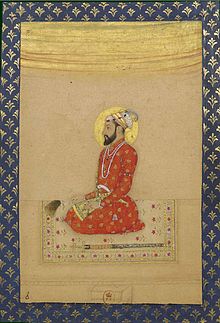Bahadur Shah the seventh Mughal emperor of India, ruled from 1707 until his death in 1712. Born Mu’azzam, Shah was the third son of Aurangzeb with his Muslim Rajput wife Nawab Bai and the grandson of Shah Jahan.
In his youth, he conspired to overthrow his father and ascend to the throne a number of times. Shah’s plans were intercepted by the emperor, who imprisoned him several times. From 1696 to 1707, he was governor of Akbarabad (later known as Agra), Kabul and Lahore.
The death of Aurangzeb in 1707 at the age of 89 is generally regarded as the beginning of the gradual decline of the powerful Mughal Empire. Nine Mughal emperors followed one another in quick succession in the next fifty years. There were three sons of Aurangzeb among whom there was a war of succession – Muazzam, Muhammad Azam and Kam Baksh.
Muazzam killed the other two and became the ruler and ruled from 1707 to 1712. He took the title of Bahadur Shah and is also sometimes referred to as Shah Alam I. Khafi Khan has called him as Shah-i-Bekhabar since he liked to appease all parties by profuse grants of titles and rewards. He ruled for five years and momentarily revived the Mughal empire.
But the Maratha power increased and they became the unchallenged rulers of the Deccan. In the province of Punjab, the Sikhs under Guru Govind Singh became a force to reckon with. One of the reasons that power centres kept springing up outside Delhi was the frequent change in the succession of empires. Nearly 17 kings were crowned during the period spanning from 1707 to 1857.
Bahadur Shah had four sons – Jahandar Shah, Azim-us Shan, Rafi-us Shan and Jahan Shah and they too fought among themselves over the succession issue. The contestants for the throne were in such indecent haste that the dead body of Bahadur Shah was not buried for almost a month. Jahandar Shah became the ruler with the help of Zulfikar Khan, who the leader of the Irani party.
